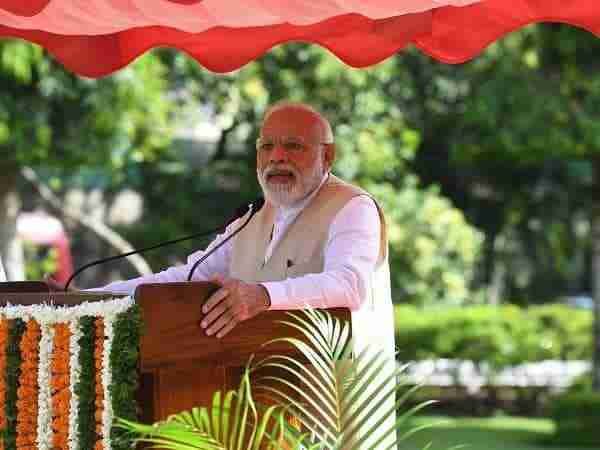PM Narendra Modi visits Maldives, Sri Lanka: ‘Our neighbourhood offers opportunities and challenges’
Prime Minister Narendra Modi has learnt from his first tenure that there isn’t much that can be expected from Pakistan unless there are significant internal changes in that country.
Prime Minister Narendra Modi has just completed a two-nation visit – to Sri Lanka and the Maldives – over the weekend, while S Jaishanker, made his first trip as Foreign Minister to Bhutan. A new neighbourhood policy is unfolding – minus Pakistan – as it became evident from the invitation that was extended to BIMSTEC leaders – countries around the Bay of Bengal – to attend Mr Modi’s swearing-in ceremony for a second term on 30th May. It sent a clear signal that India will now focus on its eastern neighbours, minus Pakistan, despite its Prime Minister, Imran Khan’s, repeated calls for a dialogue.
Mr Modi has learnt from his first tenure, that there isn’t much that can be expected from Pakistan unless there are significant internal changes in that country, which shows little signs of abandoning the use of terrorism as its primary instrument of policy against India. Pakistan has also stalled many efforts by SAARC countries – on either side of India in the sub-continent- to move forward with initiatives in bilateral trade and connectivity. So though Mr Modi had invited SAARC leaders for his first swearing-in ceremony to Delhi, but soon after that Mr Modi signalled in as early as 2014 in the SAARC summit in Kathmandu, about his desire to move forward with India’s neighbours without the baggage of Pakistan. So following the attack on Uri by Pakistan-based terrorists in September 2016, India not only boycotted the SAARC summit – along with BIMSTEC countries – to be hosted by Pakistan but a month later invited BIMSTEC leaders to attend (as observers) the BRICS summit hosted in Goa.
And thus, as Pakistan continued to block India’s access to Afghanistan and Central Asia, a new ‘mantra’ that received a greater push in South Block was to look eastwards, as part of a much earlier enunciated ‘Act East’ policy, that wouldn’t stifle India by the artificial construct of South Asia, mostly made of countries that share borders with India. There was always trouble in engaging with Pakistan on our west, while there were opportunities that we hadn’t tapped on enough in our east, which was the gateway to the booming economies of the ASEAN countries.
Thus, this new focus on BIMSTEC countries – as a bridge to that region – which includes Myanmar and Thailand (which had earlier barely figured in maps that depicted South Asia), as also Bangladesh, Nepal and Bhutan. In these countries, China has made significant inroads. Although this new arrangement for regional multilateralism, without Pakistan, has enormous prospects, we cannot just blame Pakistan for all that hasn’t worked in our favour, in the neighbourhood. Our smaller neighbours have often complained about India’s strong-arm tactics and the insistence on reciprocity at every level. That is hard for them to achieve since all of them have limited resources and many internal challenges to address.
It is thus in the fitness of things that Foreign Minister Jaishanker has stated that India would be willing to adopt a ‘generous policy’ towards its neighbours. It would see India stepping out with programmes that will have an impact on the livelihood in our neighbouring countries. It would not only be a refreshing change from our past but also substantially different from China’s hardnosed investments in countries like Sri Lanka and Pakistan. The former has now had to hand over its port city of Hambantota to the Chinese, as it couldn’t repay the high interests on Chinese investments. And Pakistan is now almost a vassal state of the Chinese with investments and projects linked to the China-Pakistan Economic Corridor (CPEC) that run across the country, from dams on the Indus river system in Gilgit-Baltistan to Gwadar, the port city on the Arabian Sea, China’s control is only increasing.
However, just as the pundits in Delhi had thought that decades of diplomacy had been washed away into the waters of the Indian Ocean, with the lure of China’s investments, India fortunes turned with the election of President Sirisena in Sri Lanka and President Solih in the Maldives. Both have since their election re-affirmed their desire to engage more effectively with India than their predecessors, who were seen to be in the Chinese camp.
It may be somewhat early to claim that India has suddenly achieved its long-standing foreign policy goal of a friendly and stable neighbourhood. Pakistan is still there, and it can still upset the best laid out plans over Kashmir and whatever India wishes to do in Afghanistan. However, any formal bi-lateral engagement with it is still unlikely soon, even if Mr Modi and Mr Khan exchange courtesies at the SCO summit later in the week in Bishkek. Mr Modi would also meet the Chinese President Xi Jinping, on the sidelines of the SCO summit.
But the real business of diplomacy is often done away from the glare of cameras, or on the sidelines of major summits, as we saw following the Ufa meeting declaration between Mr Modi and his then Pakistani counterpart Mr Sharif, or the whispers they had shared sitting on a sofa in Paris! These are just distractions and end up only in creating expectations but with no delivery after that. However, a lot is hinging on India’s new neighbourhood policy, as India attempts to harness the advantages that are offered by countries around the Bay of Bengal. If we cannot do that effectively, we can hardly hope to have any serious influence in the world beyond our shores.
Comments are closed.




Pingback:PM Narendra Modi visits Maldives, Sri Lanka: ‘Our neighbourhood offers opportunities and challenges’ – Fauji Reporter